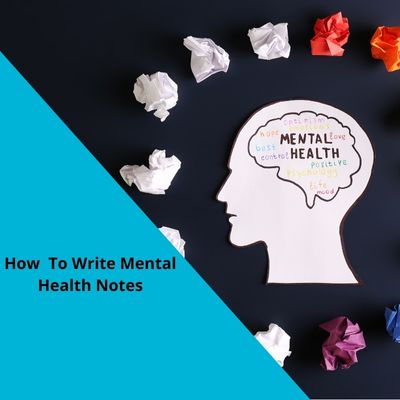Contents
How To Write Mental Health SOAP Notes
Are you looking for experts mental health SOAP notes writing services ? our mental health nurses have over the years prepared this all important clinical documentations. The state of mind of any living being is one of the most important and even more to human beings. For a long time, mental health was a topic that was thrown under the rag but the 21st century has signaled a new dawn on the topic of mental health. There is a whole array of mental challenges that have been openly recognized and they all vary in their signs and symptoms and their severity.
They however need to be treated with utmost urgency. Some of the mental illnesses are depression, post-traumatic stress disorder (PTSD), obsessive-compulsive disorder (OCD), schizophrenia, paranoia, bipolar disorder. To treat and manage these illnesses, the medical field came up with a working framework that works towards understanding what the patient is experiencing and what needs to be done to get things back under control.
SOAP notes were introduced a couple of decades ago and were aimed at evaluating information for clinical reasoning.
- What are SOAP notes?
- How do you formulate SOAP notes?
- What is the importance of these SOAP notes?
These are all questions that I am looking forward to answering by the end of the column. So, stick with me and get to the bottom of this.
What are SOAP Notes?
S.O.A.P is an acronym used to denote the four-step documentation format for medical practitioners that was originally coined by Lawrence weed. They not only symbolize the initial letter but are also arranged procedurally as titles for the SOAP notes as they should follow in the application.
SOAP stands for;
S – subjective
O – objective
A – assessment
P – plan
How To Formulate SOAP Notes
Each of the four elements here is co-dependent on the other as they progress and they form what we call progress notes.
Subjective
In this first stage, the information is sourced from the patient/ client by listening to their personal views, experiences and even feelings. This is used to establish grounds on what you will be dealing with. This section aims to collect as much relevant information as possible that will be essential to the treatment. Some people will also use this as a merit on which to bill their clients. The subjective part of your notes should contain a couple of sections that will address all that the client is experiencing. Under this, you can include sections such as

The client’s chief complaint (CC)
This is your introductory step into the client’s world. You listen to whatever the client is feeling, experiencing, prevailing conditions and symptoms. For accuracy purposes, engage your listening skills and also quote verbatim. Verbatim is where you quote word for word what your client says and make sure to put it under quotation marks. This way when doing a follow-up question you will be very precise when doing reference. This can be used as an accurate referencing point and have in mind that certain phrase are unique to certain clients and they hold meaning varying on whom it is.
Under this section, you are not limited to the client’s views and you can include those of friends, relatives and even caregivers. This widens your scope and gives you a better grasp of the situation.
History of the patient’s illness
This section opens up an avenue for you to familiarize yourself with what the patient has been dealing with and for how long in a glance. It introduces us to yet another acronym, OLDCARTS. What does ‘OLDCARTS’ have to do with any of this. Well, to get a better view of this let’s first break it down.
OLDCARTS is an acronym that is used to guide on what you need to know of the history of the patient’s illness. It covers all grounds so that you miss nothing.
O- Onset. This denotes when the client’s complaint begun, preferably on a specific date or month for accuracy purposes.
L- location. The location factor gets to understand where the CC is located. This information sheds light on the environment and what they are exposed to on merit of their location.
D-duration. Duration and onset are different though intertwined. While the onset lets you know when it all started, the duration tells you for how long. Some conditions could go on and off. Your patient will give you this in terms of days, months or even years.
C- characterization. This opens up a forum for the patient to express how they feel in their own language and words, how do they describe their symptoms.
A-aggravation. Are there circumstances or environments that make things worse? What are the trigger points and what makes it all unbearable? These are all question that you are looking to get answers for.
R- radiation, seeks to answer the question, on what spots do the prevailing problem affects and does it shift?
T- Temporal factor. At what points of the day do things get worse/ better for the client. This is attributed to routines and activities and what they are exposed to. In this case, it can include trigger points.
S- severity. The severity is as simple as it sounds. How severe are things How bad do things get? Have in mind that such issues cause patients to disrupt their schedules and be unproductive.
When doing this compilation, remember that you are reporting your findings and stick to a reporting tone and use third-person pronouns like he, she or even they to describe your patient.
Objective
The objective section follows up next and wit it carries information that is vital to the treatment process. IN nursing, objective data seeks to deliver data acquired from observation and from signs and test run. In light of this, you have t be very keen on every aspect of your client and note every sign that they are presenting.
The phrase, signs and symptoms have over the years been used interchangeably but in this, you will use them separately. This section seeks to understand the signs exhibited through observation, this may include;
-Body language
-Mood
-Clients physique
-Physical exam findings
The list goes on and on depending on the type of client you are dealing with. However, these are some of the major ones to feature on tips for writing mental health SOAP notes. It is always recommended that practitioners, they should create a comfortable environment for their client and from this, it allows them to be in their element and not fake anything. By doing this, you will be able to draw factual data from observation.
The intent of this section is a separate one from that of the Subjective section since, while in the Subjective section we are looking for the symptoms as described by the patient, here we are looking for signs. The data collected should remain in its form of raw data, without any analysis, yet. In light of this, you should be precise and only give essential information. This make sit easy for another medic to follow your ‘workflow’ and progress with ease.
As I had mentioned earlier, the whole SOAP notes process has a progressive nature to it. This means that you can rely also on the information provided earlier and look for specific aspects. However, do not ignore whatever signs are exhibited. This opens up the possibilities of multiple conditions. Look for facts that both support and contradict the statements provided. This will help you flag what is more urgent to the client’s needs. If necessary, you can run some basic tests and consider the test score.
Assessment
From the very beginning of the process to this juncture, you have collected an immense amount of data and very important data for that matter. But so far, all that you have, has not been put under scrutiny. All that raw data needs to make some sense, and the assessment section has got you covered.
As a specialist in the field of mental health, you have already determined the complexity or severity of the issue at hand. From the combination given by the signs and symptoms, you can give an evidence-based conclusion on the basis of the info gathered.
Some assessments take longer than others and especially in a comorbid situation where you have one or more simultaneous occurring conditions. Make sure that you take notice of the progress of your client. The measure of this is after evaluating the signs and symptoms exhibited at every stage of treatment.
Soap notes have provided a comprehensive system that allows you to evaluate your methodology and this will tell you when and if you should go back to the drawing board. Identify each problem exhibited and give a different diagnosis ranked based on importance.
At this point, you have already established the essentials on how to write a metal health SOAP paper. However, that is just the first step. The real deal comes in the compilation of the same which is why I recommend that you get a professionally done paper from expert writers help. The secret behind the quality paper is not only the technical know-how but also experience in the field. Nothing beats experience when it comes to these kinds of paper. Away from that, the paper still has one more essential part to it.
Plan
Having in mind that this kind of paper is a progressive type of paper, this meaning that you will use all that you have collected right from the start for this section. The PLAN section is all about making room for future accommodation for your client. What does this actually mean and what are the requirements for this section?
- The kind of treatment you administered on your client and how you administered it.
- Following this will be how was the response of the client towards the treatment.
- State the information/ awareness or assignment you gave to the patient on their condition and medication.
- You can also make recommendations of specialist that your client can see for certain issues.
These notes can very easily be used by another medical consultant when dealing with your patient and can assess what has been done and at the very same time what progress has been made. This ultimately calls for the aspect of specificity. State things as they are without leaving anything out. Make it simple, detailed and understandable. This means that you should avoid using abbreviations for easier decoding of your message at a later date. Given that some patients can be afflicted by more than one condition, you should make separate plans for each condition that you diagnosed them for.
Through the process of treatment of your client, you noted some deficits in the progress and recovery and these are areas that you need to see covered here. This allows the client to get help even for the prevailing issues. In other words, map out the treatment plan and give essential milestones in treatment.
As a medic, you should uphold certain standards as they guide you towards quality service provision. Your patient should not receive divided attention as you take notes during the sessions. This means that you can draft them and compile them later on.
Maintain impartiality in any matter and neither be too optimistic nor pessimistic on matters. This will allow you to make the right judgment and maintain a controlled atmosphere. By maintaining a sober mind, you will ask the right questions and hereby avoid making assumptions of any kind.
Writing mental health SOAP notes has never before been this easy.




